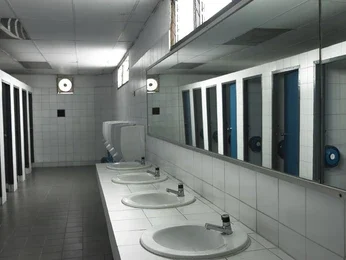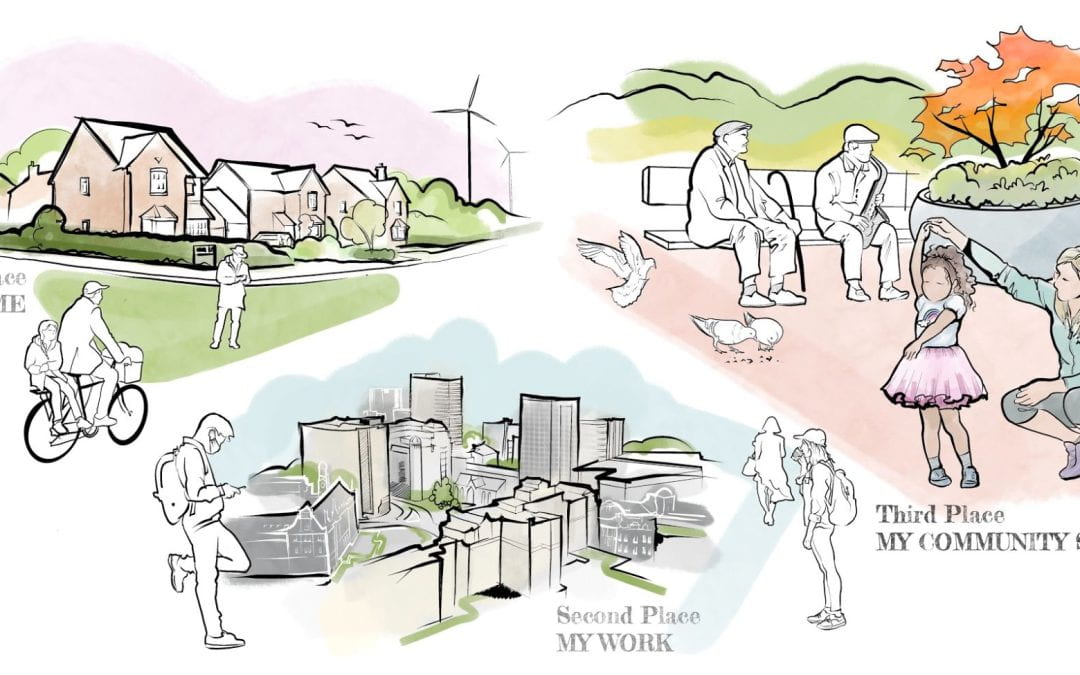When students in Mr. Abrams’ English Honors class were asked to note patterns in the ways in which their peers were sitting, a trend became apparent: almost every female-identifying student sat with their legs crossed at the knees, while nearly all male-identifying students sat leaning back or with their legs spread open. Despite the glaring difference, many students seemed unsurprised at the results. This can be attributed in part to gender theory.
Mr. Abrams defines gender theory as “an academic discipline that explores an aspect of people’s identity that can impact their behaviors and beliefs.” Compiled out of essays and studies by influential gender researchers, the theory, to put it simply, argues that a person’s gender identity influences how they look and act when living in a patriarchal society. Mr. Abrams’ classroom demonstrates this, as almost all female-identifying students sat in the exact same position, their legs crossed. This specific pose emphasizes a supposed kind of modesty, having your legs closed, as well as allows women to take up less physical space. As such, crossing their legs may be a way in which female students subconsciously change the way they look and act to better fit into a male-dominated society.
When it comes to conforming to gender norms, body language plays an essential role. However, many encounter an issue when attempting to cross their legs in HHS chairs: “A lot of the tables and chairs are very uncomfortable when I cross my legs, because they get stuck under [the table,] they get squished,” claimed an anonymous female student. Another, when answering the same question, stated, “I feel like I can’t really cross my legs a lot, because of the [compartment under the desk.] I feel like I’m always adjusting my seat.”
In contrast, when prompted to talk about physical discomfort within the school, an anonymous male-identifying student made the point that he “can’t cross [his] legs in 90% of the chairs,” but he was “able to ‘manspread.’” Another was asked if he feels comfortable sitting in chairs at school, and he responded, “for the most part, yeah,” then stated he felt most comfortable sitting with his legs uncrossed. Another joked, “I manspread in my early morning classes with no remorse.” This demonstrates how women who conform to expected feminine gender norms find themselves struggling with physical comfort in HHS furniture, because it is designed with gender-conforming males’ comfort in mind instead.
When asked about her preferred sitting position, an anonymous female-identifying student mentioned that she enjoyed “putting [her] knees up” as it makes her feel “smaller.” This is an act that undoubtedly conforms to female gender norms, as it allows the female student to take up less space. However, in this act of comfort, the student noticed a problem: sitting with her knees up caused her jeans’ waistline to gap, exposing a section of her lower back. This became problematic when she noticed that there was also a hole in the lower section of her chair; parts of her body were involuntarily being exposed. In comparison, when an anonymous male-identifying student who usually wears “jeans and a t-shirt to school” was asked if any aspects of his clothes or physical presentations caused him any issues while in school, he confidently replied “nah.” While both students wear the same type of clothes, jeans, it is the female student who is inclined to make herself smaller. Thus, the issue of comfort can be attributed to her desire to exhibit more feminine-presenting body language. The fact that the chairs’ designs do not account for these standardly feminine behaviours suggests that the architecture within HHS is more geared towards the physical comfort of men.
When asked about her clothes, a female-identifying student described that along with “tank-tops and mini-skirts,” she used to wear tights and fishnets to school. She complained that “when [she] would sit in chairs, specifically the chairs in the history classrooms, [the tights] would always get caught on the screws in the seats. They would tear.” She claims, “I actually ruined a bunch of tights that way.” Ultimately, this problem led her to stop wearing tights and fishnets to school, since, “they always ripped on the back of the thigh, that’s where the screws are, and so I don’t want to wear them anymore and just have a big hole exposing me…” The fact that a student felt the need to suppress an element of her self expression for the sake of physical comfort speaks to the problems many females face as a result of HHS’ inattentive design.
Similarly, when an anonymous female-identifying student was asked if any aspects of her physical presentation caused her any discomfort while in school, she immediately responded that “sometimes [her] hair gets stuck in the nails [on the back] of the chair.” She complained that sometimes, her hair will get “ripped out.” This student, like many other women at HHS, has long hair that she often leaves down. However, when an anonymous male student with similarly long hair was asked if he experienced any problems within the school’s architecture, he also noted that “[his] hair has been caught on things…like the screws on some of the chairs.” On the other hand, unlike many female students, his clothes “never really caused him any discomfort in school.” Thus, the male student only experienced issues relating to the one aspect of his appearance that he shares in common with many women at HHS: having long hair. This indicates that HHS furniture is geared specifically towards men who conform to masculine gender norms.
What’s crucial is to remember that there are no true masculine or feminine behaviors. There are only social expectations of different gender groups, and these expectations are what influence individuals’ appearance and actions, not their gender identity. In a world dominated by the patriarchy, exhibiting gender-conforming femininity is expected of women. However, this conformity often proves to be counterproductive, because, as discovered, most physical spaces are designed for gender-conforming men.
It is for this reason that HHS must not write off the complaints of female students. Many audiences are drawn to disregarding women’s concerns, brushing them off as absurd, irrational, or overreaching: many male-identifying interviewees were even confused by the claim, and questioned its validity. Yet it is this harmful rhetoric which hinders the experiences of women within society. Thus, it is critical that moving forward, HHS takes into account the experiences of female identifying students before making a decision that may unknowingly influence their comfort.



















